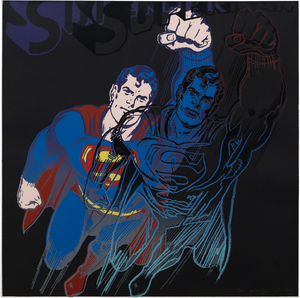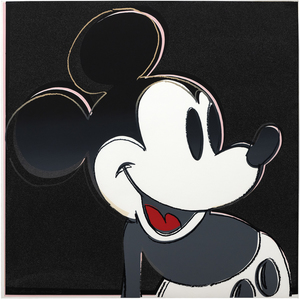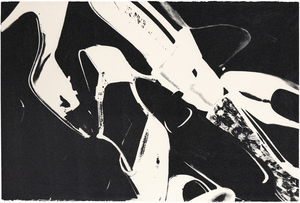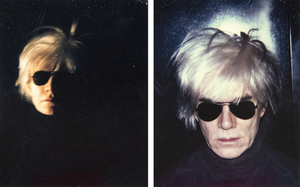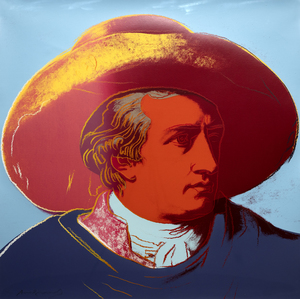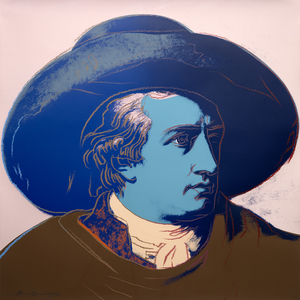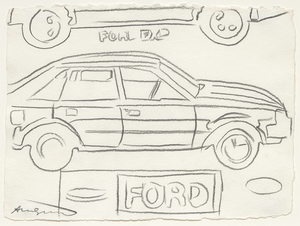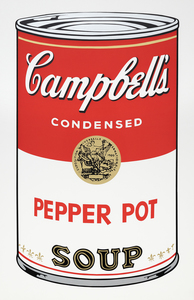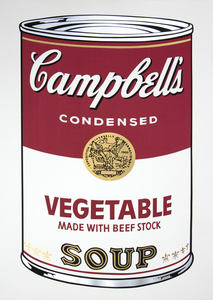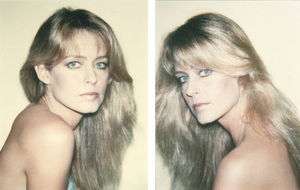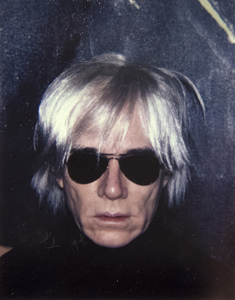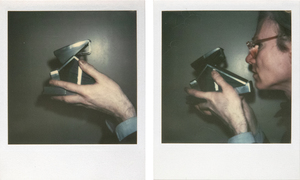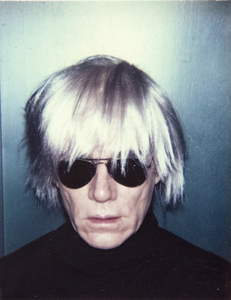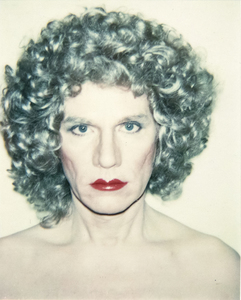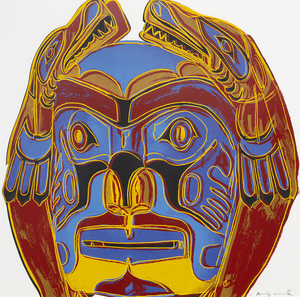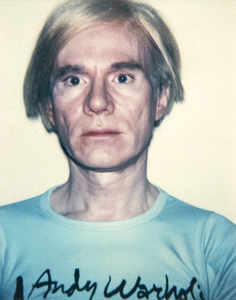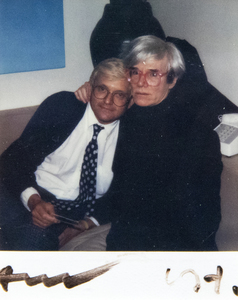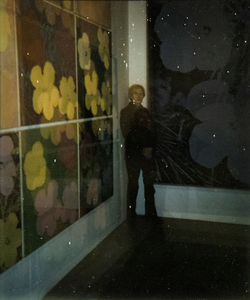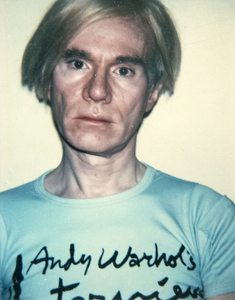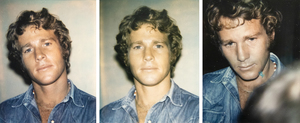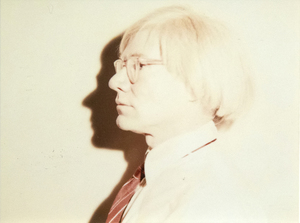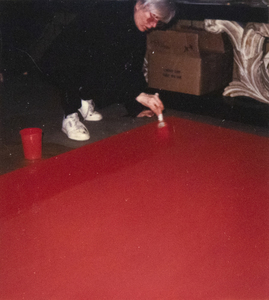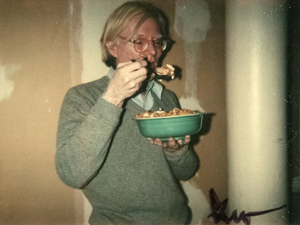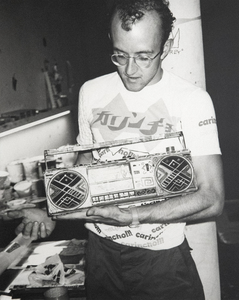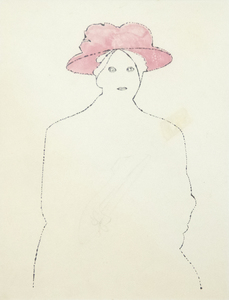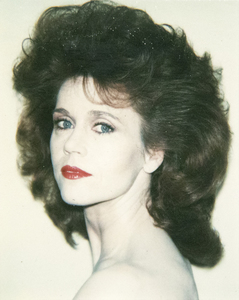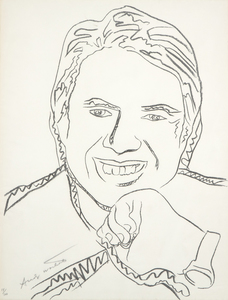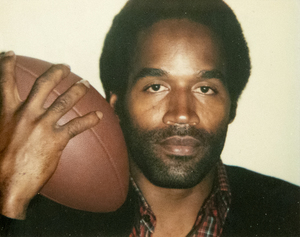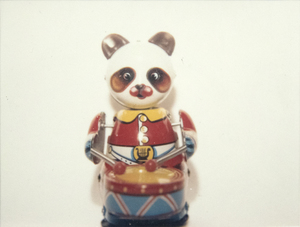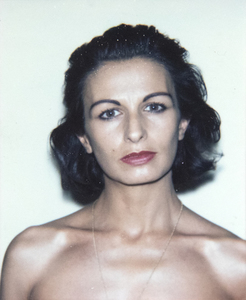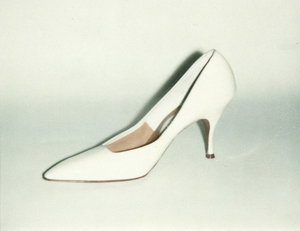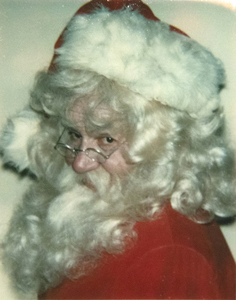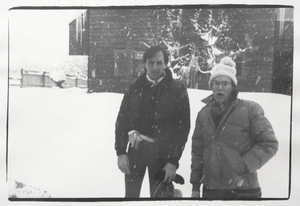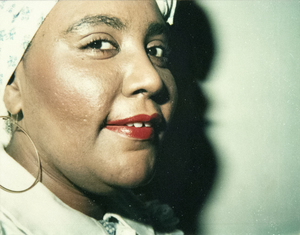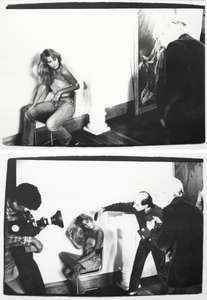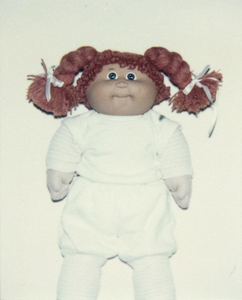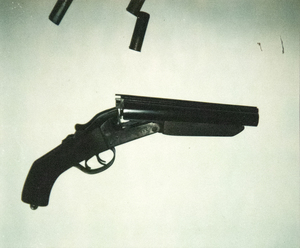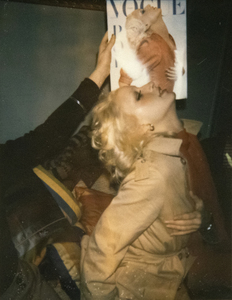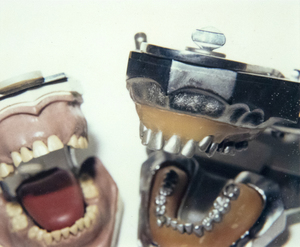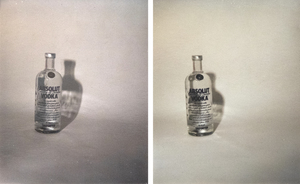ANDY WARHOL: ALL IS PRETTY
Heather James is proud to exhibit a broad selection of artworks by Andy Warhol covering three decades from the 1950s through the 1980s. The premier Pop artist, Warhol is as much known for his portraits as his depictions of consumer products; in his hands they speak to the same beating heart of what it means to be and to become American. For Warhol, any object, any person could be worthy for his art.
This exhibition synthesizes the process that Warhol used to create his works and the work’s subject matter to show how Warhol exposed the beliefs of American society. Warhol’s oeuvre (or body of work) becomes profound commentary on fame, capitalism, death, culture, society, and politics.
ARTWORK
“The only time I ever want to be something is outside a party so I can get in.” – Andy Warhol
ABOUT
SKETCHING WITH POLAROID
Despite his association with lavish parties, Warhol positioned himself as an outsider looking in. As Diana Vreeland, Warhol’s friend and subject of several of his works, said, “The eye has to travel.”
One of the ways that Warhol gave us an inside look from an outsider’s perspective was through his ever-present Polaroid camera which was his constant companion from the 1950s until his death in 1987. Presaging our modern use of cameras on our smartphone, Warhol’s Polaroids are instant and numerous.
These Polaroids served as both a kind of visual diary and a sketchpad for his paintings. Warhol even referred to the photographs as his “pencil and paper”. It is important to note that the Polaroids stayed with Warhol, despite pleas from his subjects. They are a record of his life and his practice while reflecting the ideas of inclusion and exclusion, glamour and desolation.
In the exhibition we have Warhol’s Polaroids of Farrah Fawcett. This photo session was used as a basis for the painting which now resides at the Blanton Museum of Art. In these works, we see an icon, a person considered quintessentially American but also the values of the nation projected onto and through a celebrity.
Capturing the bright and the beautiful, the famous and infamous, Warhol’s Polaroids are an unfiltered look into society while being a record of the life of one of America’s most important artists. They speak to the power of image and illusion.
For a deeper dive into Warhol’s Polaroids, visit our exhibition Andy Warhol Polaroids: Wicked Wonders.
PORTRAIT OF AMERICA
Whether of people or objects, Warhol’s portraits reflect back the values and character of the United States. The exhibition includes Polaroids of some of the nation’s most glamourous faces – Cheryl Tiegs, Farrah Fawcett, Jane Fonda – but how are we to interpret the image of O.J. Simpson knowing what would happen less than twenty years after Warhol took this photograph. Fame and infamy are not so different and Warhol certain treated them the same.
The show also includes Polaroid variations of people dressed as Santa and Aunt Jemima. These subjects were included in Warhol’s famed Myth series. The figures tower in the imagination of the country, touching upon our deepest desires and our deepest fears through the stories we tell ourselves. What does it mean to conflate Christmas through the figure of Santa? How do we grapple with the legacy of Aunt Jemima?
But portraits are not just of people. Even the objects that Warhol captured mirror the concerns and obsessions of a country. The Electric Chair series represent Warhol at his most pointed. Part of his Death and Disaster series which included car crashes and tainted cans of foods, Electric Chair is a high-wire act of art. While the works are a confection of color, seducing the viewer, we can never forget it is a depiction of a method of capital punishment. Warhol pulled from a press photograph of the death chamber at Sing Sing Prison in 1953 – the same year, place, and even chair where Julius and Ethel Rosenberg were executed for espionage. Warhol seems to suggest a particularly American fascination and perhaps uneasy preoccupation. The bright but unnatural colors and subject matter disquiet the viewer, making us both outside observers and complicit participant.
Not all portraits need be so cynical. Warhol’s Endangered Species series, though containing subjects on the brink of extinction, speak to the possibilities of hope and change. Warhol had always been fascinated by nature – look no further than his childhood or his drawings of flowers – so it is not hard to see that ecological issues would speak to the artist and compel him to create a series to raise awareness of the threat that faces us all.
THE ART OF SHOPPING
Pop Art would not be Pop Art without the explosion of mass consumer culture after WWII. Perhaps no other artist could compare to Warhol in depicting the consumption of goods. The exhibition includes works from his most famous series, Campbell’s Soup. How often does a work of art inspire an entire challenge and runway on RuPaul’s Drag Race? While we may look back on the series through the lens of nostalgia for a warm past, we must situate the work within its time.
Amid Abstract Expressionisms dominance, Warhol presented what seemed like mundane and ubiquitous objects of daily life. Additionally, by screen printing the images, Warhol appeared to reproduce the very mechanical nature of Campbell’s production. In their first exhibition at the Ferus Gallery in Los Angeles, the prints were presented linearly, resting on a shelf as if to mimic the shopping experience of buying groceries. Could advertising be art? Could art be as simple as buying a can of soup?
Let us not forget that Warhol began as commercial illustrator. These skills and captivations would appear throughout his career. Take for example, the drawing of Ford cars or the diamond dusted screen prints, the Polaroids of shoes in the exhibition, or even the earliest work in the exhibition, Woman in a Pink Hat. Items of consumption transform into subjects worthy of “fine” art if only because they are worthy of being bought and sold; their very marketing transforms into art, showcasing the ideals and values of a society.
And perhaps few other objects could lay claim into laying bare the values of a time and society than the Cabbage Patch Kids. The craze and stampede for these dolls demonstrated the consumerism of the 1980s (for more about art in the 1980s see our exhibition It Was Acceptable in the 80s) which Warhol transforms into studies of art, a Dutch tulip still life for a contemporary generation.
“You’re a killer of art, you’re a killer of beauty, you’re even a killer of laughter.” – Willem de Kooning on Andy Warhol

![Andy Warhol [with art] Andy Warhol [with art]](https://www.heatherjames.com/wp-content/uploads/2023/08/Andy-Warhol-with-art-636x500.jpg)


